Gas Respirator
WhatsApp Order
PRODUCT DESCRIPTION
A gas respirator, also known as a gas mask, is a personal protective equipment device designed to provide a wearer with respiratory protection against the inhalation of harmful gases, vapors, and particulate matter in the air. It typically consists of a face piece that covers the nose and mouth, along with filters or cartridges that remove or neutralize contaminants from the air before the wearer breathes it in. Gas respirators are commonly used in various industries, emergency response situations, and military applications to safeguard individuals from exposure to hazardous airborne substances.
Description
Uses of a GAS RESPIRATOR
- Industrial Settings:
- Chemical Industry: Workers handling or exposed to hazardous chemicals, gases, or vapors use gas respirators to protect themselves from respiratory hazards.
- Painting and Coating: Professionals in painting and coating industries use gas masks to avoid inhaling harmful fumes and vapors from paints, solvents, and coatings.
- Petrochemical Industry: Workers dealing with petrochemicals and refining processes use gas respirators to protect against toxic gases and fumes.
- Emergency Response and Disaster Management:
- Firefighting: Firefighters use gas respirators to protect themselves from smoke, toxic fumes, and other hazardous substances during firefighting operations.
- Chemical Spills and Accidents: Emergency responders use gas masks when dealing with chemical spills or accidents to avoid inhaling dangerous substances.
- Military Applications:
- Chemical Warfare: Military personnel use gas masks to protect themselves from chemical, biological, radiological, and nuclear (CBRN) threats on the battlefield.
- Tactical Operations: Special Forces and military units may use gas respirators during tactical operations to protect against various airborne threats.
- Healthcare:
- Infectious Diseases: During outbreaks of infectious diseases, healthcare workers may use gas masks to protect themselves from airborne pathogens.
- Laboratory Work: Researchers working with hazardous substances in laboratories may use gas respirators to ensure their safety.
- Environmental Monitoring:
- Air Quality Monitoring: Professionals involved in monitoring air quality, especially in polluted environments or industrial areas, may use gas masks to avoid inhaling harmful pollutants.
- Construction and Demolition:
- Demolition Work: Workers involved in demolition projects may use gas respirators to protect against dust, debris, and potential airborne contaminants.
- Asbestos Removal: Professionals removing asbestos use gas masks to prevent the inhalation of asbestos fibers.
- Personal Safety:
- DIY Projects: Individuals engaging in home improvement or DIY projects that involve exposure to potentially harmful substances may use gas respirators for personal protection.
SAFETY HANDLING PRECAUTIONS
Safety measures and precautions
- Proper Fit:
- Ensure that the gas respirator is properly fitted to your face. Follow the manufacturer's guidelines for sizing and adjusting straps to achieve an airtight seal.
- Training and Familiarity:
- Receive proper training on how to use the specific type of gas respirator you are using. Familiarize yourself with its features, limitations, and proper donning and doffing procedures.
- Inspection and Maintenance:
- Regularly inspect the gas respirator for any signs of damage, wear, or deterioration. Replace damaged parts promptly. Follow the manufacturer's maintenance guidelines.
- Filter/Cartridge Replacement:
- Replace filters or cartridges according to the manufacturer's recommendations or when you notice a change in breathing resistance. Using expired or clogged filters can compromise respiratory protection.
- User Seal Check:
- Perform a user seal check every time you don the gas respirator to ensure a proper seal. Follow the specific instructions provided by the manufacturer for the seal check.
- Storage:
- Store the gas respirator in a clean, dry place when not in use. Avoid exposing it to direct sunlight, extreme temperatures, or contaminants that could degrade its materials.
- Limitations and Contaminant Identification:
- Be aware of the limitations of your gas respirator, including the types of contaminants it can protect against. Identify the specific hazards in your environment to ensure the respirator is suitable for the task.
- Communication:
- Establish a means of communication with others while wearing the gas respirator, especially in situations where clear communication is essential.
- Emergency Procedures:
- Know the emergency procedures for your specific work environment, including exit routes, assembly points, and protocols for handling malfunctions or exposure incidents.
- Medical Clearance:
- Before using a gas respirator, ensure that you have received medical clearance to wear respiratory protection. Some individuals may have medical conditions that make respirator use unsafe.
- Hygiene Practices:
- Follow proper hygiene practices, including washing hands thoroughly before putting on and after removing the gas respirator. Avoid touching the inside of the respirator.
- Fit Testing:
- Undergo fit testing as required by occupational health and safety regulations to ensure that the respirator provides an effective seal for your face.
Related products
A safety helmet, typically colored blue, is a protective headgear designed to minimize the risk of head injuries in various environments, especially in industrial, construction, and occupational settings. It consists of a hard outer shell made of durable materials, such as plastic or fiberglass, and an inner suspension system to absorb impact energy and provide cushioning. The blue color may serve as a visual identifier for specific roles, departments, or safety protocols within a workplace. The primary purpose of a safety helmet is to safeguard the wearer against falling objects, impact from collisions, or other potential hazards, contributing to overall workplace safety.
AUTO DARKENING SOLAR POWERED WELDING HELMET
An auto-darkening, solar-powered welding helmet is a protective headgear device specifically designed for welders. It incorporates advanced technology to automatically adjust the darkness of the helmet's lens in response to the intensity of the welding arc. This type of helmet utilizes solar panels to harness and convert sunlight or welding arc light into energy, powering the automatic darkening mechanism. The key feature of an auto-darkening welding helmet is its ability to provide instant and adaptive shading, offering optimal visibility during welding while ensuring the welder's eyes are protected from harmful ultraviolet and infrared rays.
Insulated Safety Boots
Insulated safety boots are a type of footwear designed to provide protection for the feet in hazardous work environments while also offering insulation against extreme temperatures. These boots are commonly used in industries such as construction, manufacturing, and utilities where workers are exposed to various risks, including heavy objects, sharp materials, electrical hazards, and cold weather conditions.
Knitted & Pvc Dots Gloves
- Knitted Gloves: Knitted gloves refer to hand coverings that are crafted through the process of knitting, a method of creating fabric by interlocking loops of yarn. These gloves are typically made from various types of yarn, such as cotton, wool, or synthetic fibers. Knitted gloves are known for their flexibility, comfort, and breathability, making them suitable for a wide range of activities and environments. They come in different styles, thicknesses, and designs to cater to various purposes, from lightweight and dexterous gloves for delicate tasks to heavier and insulated options for colder conditions.
- PVC Dots Gloves: PVC dots gloves are a type of work glove that features small raised dots or patterns made from polyvinyl chloride (PVC) on the palm or fingers. These dots enhance the grip and abrasion resistance of the gloves, providing better control and preventing slips when handling objects. The base material of PVC dots gloves can vary and may include fabrics like cotton, polyester, or a blend of materials. These gloves are commonly used in tasks where a secure grip is essential, such as in construction, manufacturing, or general labor. The PVC dots enhance the overall functionality of the gloves without sacrificing flexibility.
Leather Gloves
Leather gloves are hand-covering garments made from the tanned hides of animals, typically cows, goats, or sheep. These gloves are crafted by cutting and stitching pieces of leather to form protective coverings for the hands. Leather gloves are valued for their durability, flexibility, and ability to provide a comfortable and stylish barrier against environmental elements, making them widely used for various purposes, including fashion, work, and outdoor activities.
Safety Goggles (PVC)
Safety goggles are protective eyewear designed to shield the eyes from potential hazards in various environments, such as industrial workplaces, laboratories, or construction sites. These goggles typically feature impact-resistant lenses and a form-fitting frame to provide a barrier against flying debris, liquids, chemicals, or other materials that could cause harm to the eyes. The primary purpose of safety goggles is to enhance eye safety and prevent injuries by creating a physical barrier between the eyes and potential dangers, ensuring a higher level of occupational or recreational safety.
Safety Helmet (Orange)
A safety helmet (orange) is a protective headgear designed to mitigate the risk of head injuries in various industrial, construction, or recreational settings. Typically constructed with a hard outer shell and an inner suspension system, the helmet absorbs and distributes impact energy to reduce the severity of head trauma in the event of accidents, falls, or falling objects. The distinctive orange color serves as a visible indicator, enhancing safety by making wearers easily identifiable, especially in environments where high visibility is crucial. The helmet's design adheres to safety standards to ensure optimal protection for the wearer's head during potential hazards.
Transparent Safety Goggles
Transparent safety goggles are protective eyewear designed to shield the eyes from dust, debris, chemical splashes, and other workplace hazards. Made with clear, impact-resistant lenses, they offer full visibility while forming a secure seal around the eyes. These goggles are commonly used in industrial, laboratory, construction, woodworking, and medical environments. Many models feature anti-fog and scratch-resistant coatings, adjustable straps, and ventilation to enhance comfort during extended use. Their wraparound design provides superior protection compared to standard safety glasses.


 Acrylic Sealants
Acrylic Sealants Construction Adhesives
Construction Adhesives Double-Sided Tape
Double-Sided Tape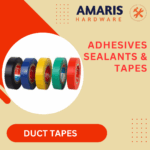 Duct Tape
Duct Tape Electrical Tape
Electrical Tape Epoxy & Resins
Epoxy & Resins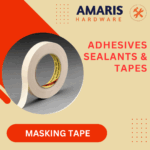 Masking Tape
Masking Tape
 Automotive Wrenches & Socket Sets
Automotive Wrenches & Socket Sets Battery Chargers & Jump Starters
Battery Chargers & Jump Starters Car Jacks & Stands
Car Jacks & Stands Car Wash & Detailing Products
Car Wash & Detailing Products Diagnostic Tools
Diagnostic Tools Tire Inflators
Tire Inflators Vehicle Lighting
Vehicle Lighting Oil & Lubricants
Oil & Lubricants
 Adhesives & Sealants
Adhesives & Sealants Bricks & Blocks
Bricks & Blocks Cement & Concrete
Cement & Concrete Drywall & Plaster
Drywall & Plaster Flooring (Tiles, Wood, Laminate)
Flooring (Tiles, Wood, Laminate) Lumber & Plywood
Lumber & Plywood Paints, Primers & Coatings
Paints, Primers & Coatings Insulation Materials
Insulation Materials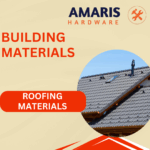 Roofing Materials
Roofing Materials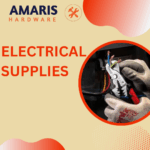
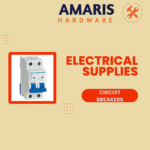 Circuit Breakers
Circuit Breakers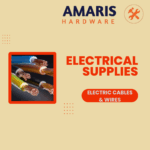 Electrical Cables & Wires
Electrical Cables & Wires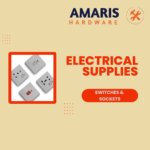 Switches & Sockets
Switches & Sockets Fuses & Relays
Fuses & Relays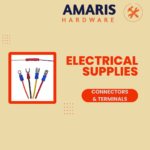 Connectors & Terminals
Connectors & Terminals Electrical Boxes & Panels
Electrical Boxes & Panels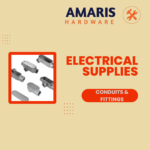 Conduit & Fittings
Conduit & Fittings Lighting Fixtures & Bulbs
Lighting Fixtures & Bulbs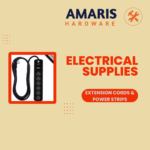 Extension Cords & Power Strips
Extension Cords & Power Strips
 Anchors
Anchors Bolts
Bolts Clips & Clamps
Clips & Clamps Screws
Screws Nuts
Nuts Washers
Washers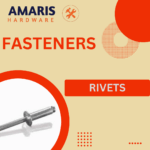 Rivets
Rivets Nails
Nails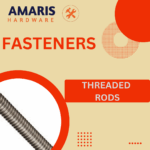 Threaded Rods
Threaded Rods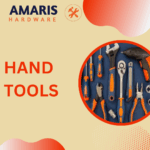
 Hammers
Hammers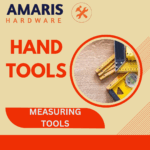 Measuring Tools (Tapes, Levels, Calipers)
Measuring Tools (Tapes, Levels, Calipers) Screwdrivers
Screwdrivers Pliers & Cutters
Pliers & Cutters Saws & Blades
Saws & Blades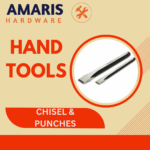 Chisels & Punches
Chisels & Punches Allen Keys & Hex Keys
Allen Keys & Hex Keys Ratchets & Socket Sets
Ratchets & Socket Sets Wrenches & Spanners
Wrenches & Spanners
 Power Tool Accessories (Blades, Bits, Discs)
Power Tool Accessories (Blades, Bits, Discs)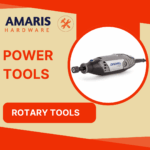 Rotary Tools
Rotary Tools Saws (Circular, Jigsaw, Reciprocating)
Saws (Circular, Jigsaw, Reciprocating) Drills & Drivers
Drills & Drivers Grinders & Sanders
Grinders & Sanders Heat Guns
Heat Guns Nail Guns
Nail Guns Impact Wrenches
Impact Wrenches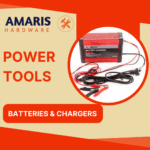 Batteries & Chargers
Batteries & Chargers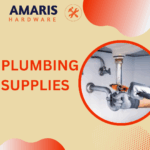
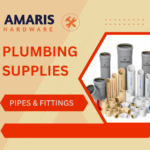 Pipes & Fittings (PVC, Copper, PEX)
Pipes & Fittings (PVC, Copper, PEX) Plumbing Tools
Plumbing Tools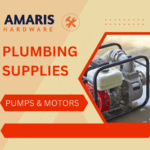 Pumps & Motors
Pumps & Motors Sealants & Adhesives for Plumbing
Sealants & Adhesives for Plumbing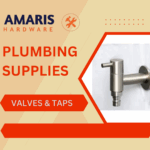 Valves & Taps
Valves & Taps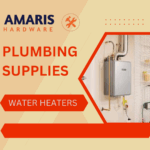 Water Heaters
Water Heaters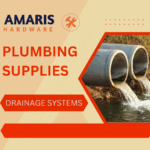 Drainage Systems
Drainage Systems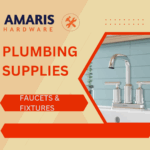 Faucets & Fixtures
Faucets & Fixtures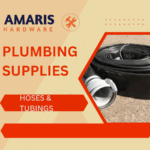 Hoses & Tubing
Hoses & Tubing
 Hinges & Latches
Hinges & Latches Hooks & Brackets
Hooks & Brackets Window Hardware
Window Hardware Chains & Cables
Chains & Cables Casters & Wheels
Casters & Wheels Shelving & Storage Systems
Shelving & Storage Systems Door Handles & Locks
Door Handles & Locks Drawer Slides & Cabinet Hardware
Drawer Slides & Cabinet Hardware
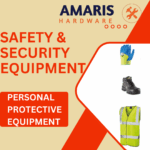 Personal Protective Equipment (PPE)
Personal Protective Equipment (PPE)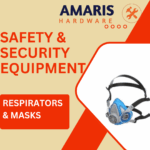 Respirators & Masks
Respirators & Masks Safety Glasses
Safety Glasses Safes
Safes Security Cameras
Security Cameras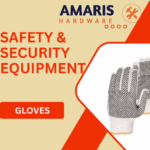 Gloves
Gloves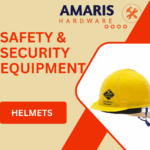 Helmets
Helmets Ear Protection
Ear Protection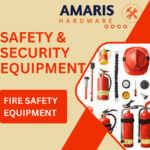 Fire Safety Equipment
Fire Safety Equipment Locks & Padlocks
Locks & Padlocks Motion Sensors & Alarms
Motion Sensors & Alarms
 Garden Fencing
Garden Fencing Garden Furniture Hardware
Garden Furniture Hardware Lawn Mowers
Lawn Mowers Trimmers & Edgers
Trimmers & Edgers Shovels & Spades
Shovels & Spades Rakes & Hoes
Rakes & Hoes Pruning Shears & Loppers
Pruning Shears & Loppers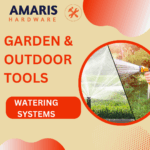 Watering Systems (Hoses, Sprinklers, Nozzles)
Watering Systems (Hoses, Sprinklers, Nozzles)
 Interior Paints
Interior Paints Paint Brushes & Rollers
Paint Brushes & Rollers Paint Strippers & Thinners
Paint Strippers & Thinners Paint Trays & Accessories
Paint Trays & Accessories Exterior Paints
Exterior Paints Spray Paints
Spray Paints Primers & Undercoats
Primers & Undercoats Varnishes & Stains
Varnishes & Stains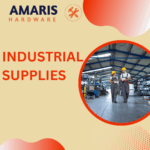
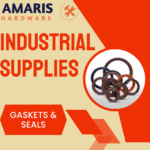 Gaskets & Seals
Gaskets & Seals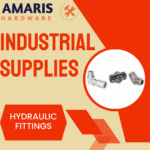 Hydraulic Fittings
Hydraulic Fittings Industrial Fasteners
Industrial Fasteners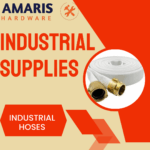 Industrial Hoses
Industrial Hoses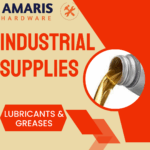 Lubricants & Greases
Lubricants & Greases Metal Sheets & Bars
Metal Sheets & Bars Bearings & Bushings
Bearings & Bushings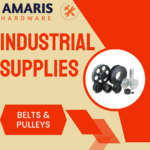 Belts & Pulleys
Belts & Pulleys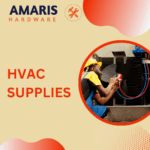
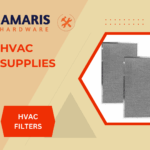 HVAC Filters
HVAC Filters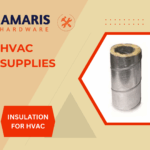 Insulation for HVAC
Insulation for HVAC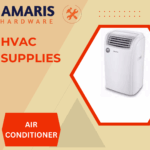 Air Conditioners
Air Conditioners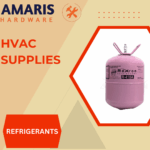 Refrigerants
Refrigerants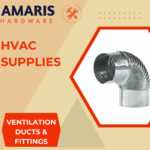 Ventilation Ducts & Fittings
Ventilation Ducts & Fittings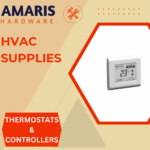 Thermostats & Controllers
Thermostats & Controllers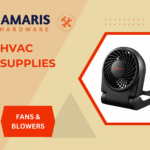 Fans & Blowers
Fans & Blowers
 Pegboards & Hooks
Pegboards & Hooks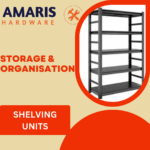 Shelving Units
Shelving Units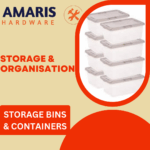 Storage Bins & Containers
Storage Bins & Containers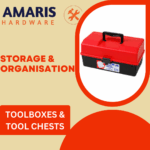 Toolboxes & Tool Chests
Toolboxes & Tool Chests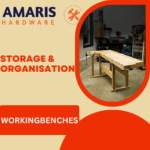 Workbenches
Workbenches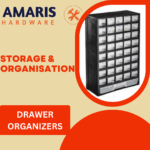 Drawer Organizers
Drawer Organizers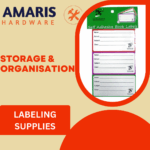 Labeling Supplies
Labeling Supplies
 Welding Accessories (Clamps, Brushes)
Welding Accessories (Clamps, Brushes) Welding Electrodes & Rods
Welding Electrodes & Rods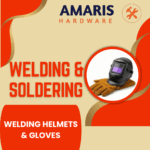 Welding Helmets & Gloves
Welding Helmets & Gloves Welding Machines
Welding Machines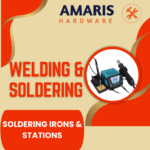 Soldering Irons & Stations
Soldering Irons & Stations Flux & Solder Wire
Flux & Solder Wire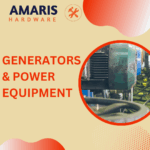
 Generator Accessories
Generator Accessories Inverters
Inverters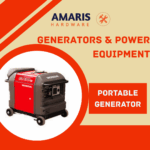 Portable Generators
Portable Generators Power Inverters
Power Inverters Transfer Switches
Transfer Switches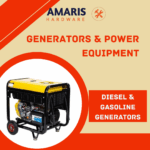 Diesel & Gasoline Generators
Diesel & Gasoline Generators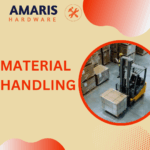
 Transport Equipment: Carts, Dollies, and Hand Trucks
Transport Equipment: Carts, Dollies, and Hand Trucks Storage Solutions: Pallets, Racks, and Containers
Storage Solutions: Pallets, Racks, and Containers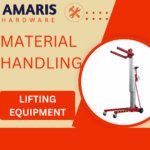 Lifting Equipment: Hoists, Cranes, and Jacks
Lifting Equipment: Hoists, Cranes, and Jacks Conveyors and Accessories: Belts and Rollers
Conveyors and Accessories: Belts and Rollers




